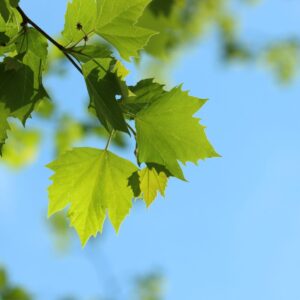Showing the single result
Wholesale Sycamore Trees in Michigan For Sale
Cold Stream Farm is a proud purveyor of wholesale sycamore trees, based in Free Soil, Michigan. Our sycamore trees are available at various life stages, with 4 to 5-foot plants available only in the spring. Currently, there are no restrictions on sycamore tree orders, with no minimum purchase requirement and shipping throughout the United States. Please contact Cold Stream Farm with any questions about wholesale sycamore tree shipments.
About Sycamore Trees (Platanus occidentalis)
We grow, sell, and deliver sycamore trees (Platanus occidentalis) from our facilities in Michigan. The plants are native to eastern North America, primarily in the United States, as far west as Texas and Iowa. A few natural Plantus occidentalis growths can also be found in northern Mexico and southern Canada.
What’s in a name?
Sycamore trees have the scientific classification of Platanus occidentalis, with the species “occidentalis” deriving from the Latin for “Western.” Although they are found in the eastern United States, here, western distinguishes this species from plants in the same family found in the eastern hemisphere.
There are many common names for Platanus occidentalis, as the plant is native to a wide-spanning region. Most often, the plant is called sycamore, American sycamore, buttonwood, button-ball tree, American planetree, occidental plane, western plane, water beech, or occidental pine.
Size and Appearance
Standing tall at mature heights over 100 feet, sycamore trees dominate landscapes when planted in soils that allow for deep rooting. The large trunk can reach diameters of up to 6 feet, often sprouting several secondary trunks to support heavy, upward branch growth. Canopy shapes are typically irregular.
A sycamore tree can be recognized by its mottled bark which frequently flakes to expose a wide variety of colors that turn from brown to yellow, green, and white. The trunk is often hollow, whereas the roots are very fibrous. Sycamore trees are among the tallest American hardwood trees.
Buds, Leaves, Flowers, and Fruit
In the late spring, small winter buds begin to sprout large green leaves that can grow as big as 9 inches on mature trees. The leaves will often appear around the same time that the flowers bloom. Sycamore flowers are small, dark red, and difficult to notice near the bark, which is a similar color.
By the fall, sycamore trees begin to bear their fruit, which is a small, solitary spherical-shaped growth. Nicknamed “button-balls,” these fruits have nut-like seeds that appear hairy, hanging from a long, central stem.
Ideal Growing Conditions for Sycamore Trees
Sycamore trees grow best in USDA hardiness zones 4-9. They can withstand urban environments quite well and are therefore commonly used in urban parks and properties. Outside of their native habitat, sycamore trees have adapted well globally as well as in other parts of the United States.
Ideally, sycamores are grown in moist, rich soil for maximum growth. They are typically planted ornamentally in full sun, creating a shaded area below.
Practical Uses for Sycamore Trees
Besides adding shade and scenery, sycamore trees may also be harvested for their strong and durable wood. With a wide variety of applications, sycamore tree wood has been used to create musical instruments, shipping crates, siding, furniture, cutting boards, and butcher blocks. Primarily grown for their timber, sycamore trees are also being used as a biomass crop.
Wildlife and Insects
The seeds of a sycamore tree are eaten by a large number of bird species, while the tree itself is a favorite among many insects including the sycamore leaf beetle, which is named after the plant.
Sycamore tree branches are often covered with caterpillars which use the tree to reproduce while inadvertently attracting other hungry birds. It is common to see ducks, owls, finches, and chickadees resting and feeding in sycamore trees.
Common Ailments
Despite their resilience to pests and environmental pollution, sycamore trees can be subject to many common diseases, primarily from fungal growth. Naturally occurring fungi will rarely kill a mature sycamore tree, although it may cause some early defoliation. Modern sycamore trees have even built up defenses to some of their introduced fungi species through cultivation.
Fun Facts about Sycamore Trees
Sycamore trees play an important role in American culture, with references frequently occurring in music and literature. The New York Stock Exchange is founded on the “button-wood agreement” which is named for a sycamore tree located on Wall Street in New York City.
There are several places that boast singular sycamore trees as the largest tree in the state including Massachusetts, Connecticut, and West Virginia.
Purchase wholesale sycamore trees with Cold Stream Farm.
Shipped directly from our land in Free Soil, Michigan, Cold Stream Farm has a limited stock of living, wholesale sycamore trees. Please check our current availability of sycamore trees to get started on your next order. Both large sycamore trees and bare-root seedlings are best available in spring, with small transplants for sale throughout the year. Feel free to contact Cold Stream Farm with any questions regarding your next order.


